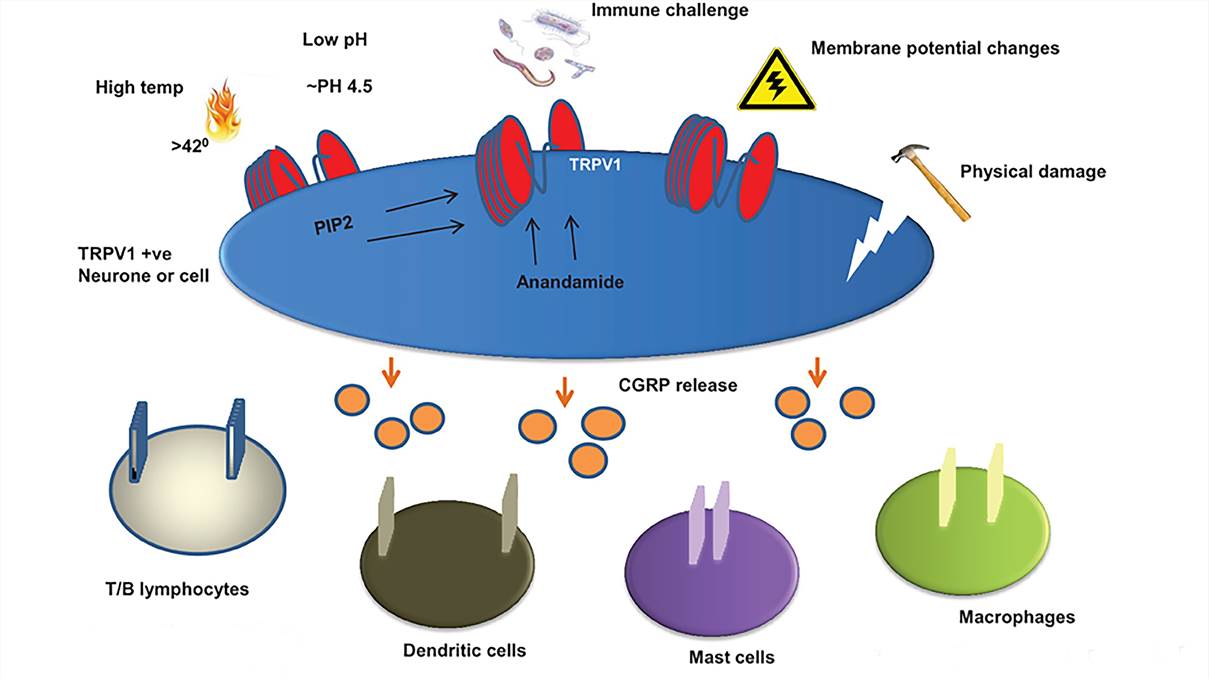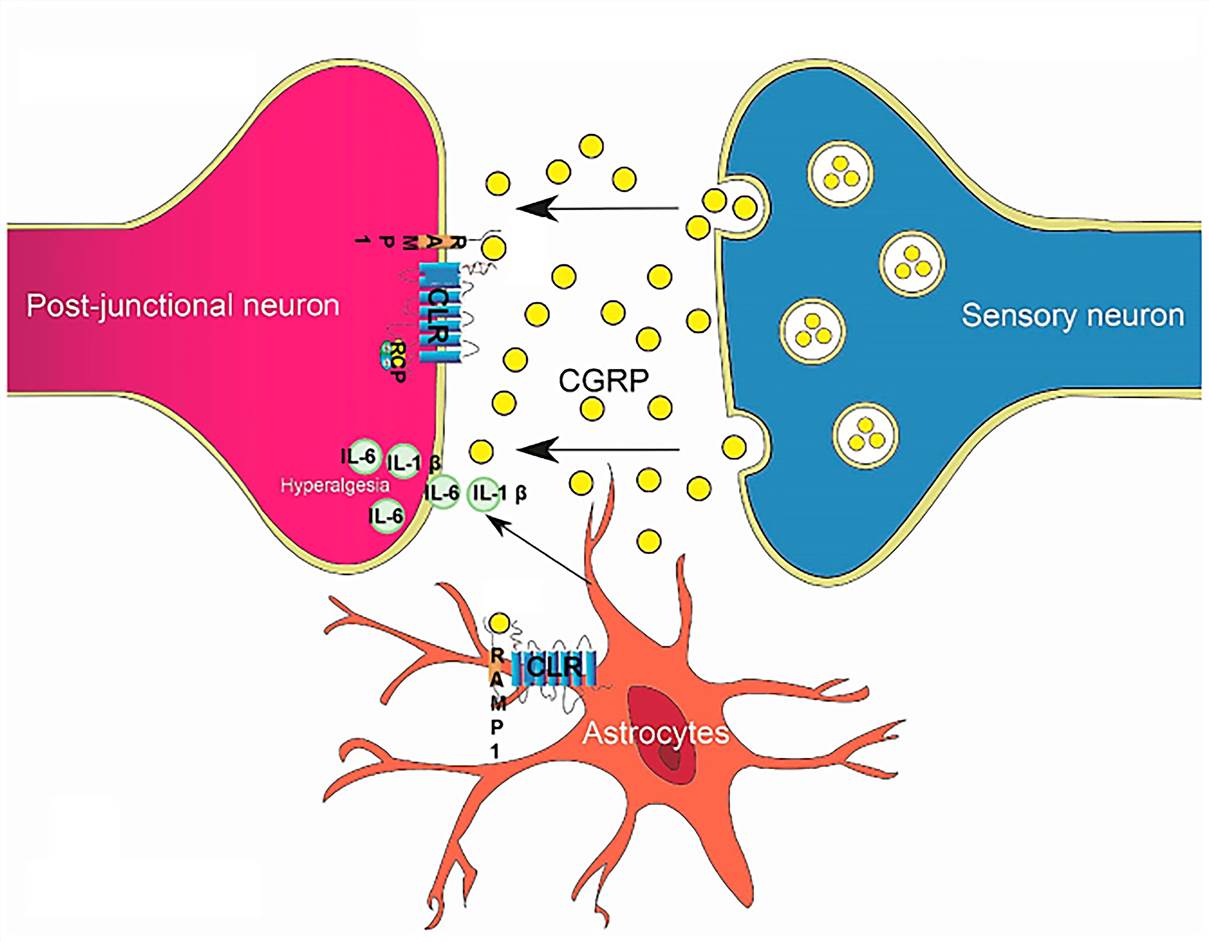Calcitonin gene-related peptide (CGRP), the most abundant neuropeptide in the trigeminal ganglion, exerts a dual effect on cancer development and cancer-associated pain in various types of cancer. With advanced and high-end technologies, rich experienced scientists, Creative Biolabs is an excellent service provider in the field of tumor marker assay. After long years ahead to fully comprehend tumor markers, we launch our CGRP assay portfolio service which can be useful for targeted cancer therapy and diagnosis.
CGRP is a 37-amino acid neuropeptide, which has various biological actions, including responses to sensory stimuli, cardiovascular regulation, and vasodilation. CGRP has two major isoforms: α- and β-CGRP, which have similar structures and biological activities, but are encoded by separate genes (CALCA for α-CGRP and CALCB for β-CGRP).
Release of CGRP is the response to activation of TRPV1 in the nervous and immune systems. TRPV1 can be activated by many external factors associated with pain and regular sensation below pain thresholds, including the well-characterized responses to heat, pH, and damage, as well as to toxins, immune challenges and membrane potential changes brought about by physiological and pathological processes. Any activation of TRPV1 results in the release of CGRP from the neuron. The released CGRP then acts on its specific receptor on cells immediately adjacent to the neuron, which in the case of sensory c fibers can be lymphocytes, DCs, mast cells, macrophages or cells within the hemopoietic microenvironment of the bone marrow.
 Fig.1 Pathways of CGRP release via TRPV1 activation. (Assas, 2014)
Fig.1 Pathways of CGRP release via TRPV1 activation. (Assas, 2014)
Cancer-induced Pain is one of the most common factors affecting the quality of life in patients. Studies have revealed that 75-95% of patients with advanced-stage or metastatic cancer will experience cancer-induced pain. CGRP modulates pain in two major ways. CGRP exerts its pain conduction role via binding to the CLR/RAMP1/RCP receptor complex on post-junctional neurons. Additionally, CGRP may release IL-6 and IL-1β by binding to receptors on astrocytes, directly influencing peripheral and central sensitization, which results in hyperalgesia and allodynia.
 Fig.2 CGRP in pain conduction and hyperalgesia. (Zhang, 2020)
Fig.2 CGRP in pain conduction and hyperalgesia. (Zhang, 2020)
Several studies have shown that CGRP can directly modulate the development of various types of cancer and discovered the expression of the CGRP receptor complex in cancer cells.
If you are interested in our service, please contact us or directly send us.
For Research Use Only | Not For Clinical Use